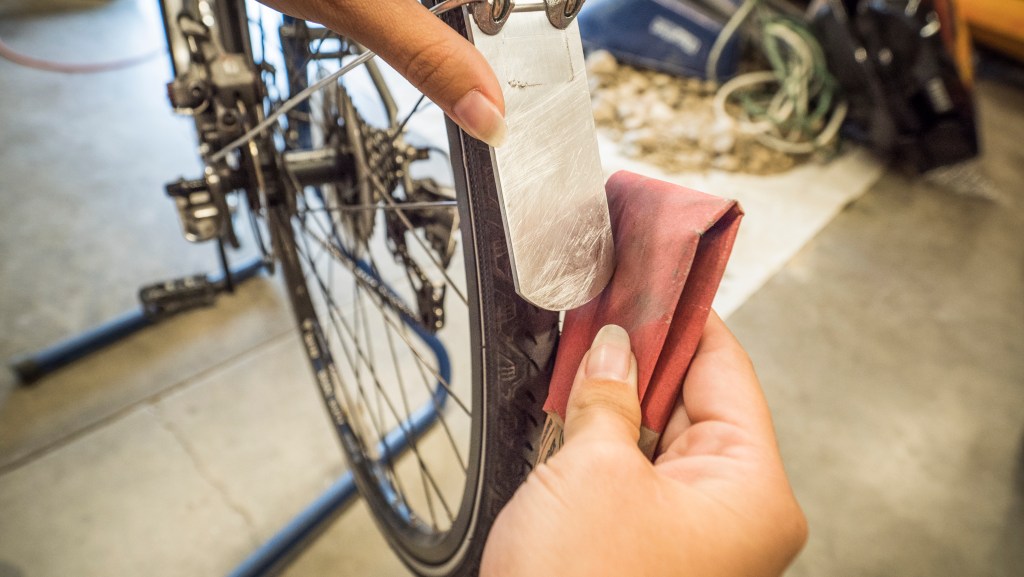When wet weather arrives, many of us are reluctant to hang up our bikes. And why should we? There are many ways to stay warm and comfortable on our bikes, despite the weather, and fenders are key for blocking splattered mud and water. Whether you want to save a few bucks or are just looking for a fun rainy-day project (see what we did there?), these DIY front and rear fenders are the perfect addition to any two-wheeled steed so you can keep rolling through the seasons.
For this DIY, you should be comfortable handling a hacksaw, drill and a few other small tools. Materials cost around $15 to $20, and it took us a few hours to complete once we gathered what we needed.
Note that bikes vary significantly in specs and sizing. Bolt-on fenders require that your bike frame has threaded fittings for installation. You must confirm this design will work for your frame and tires, and make modifications where necessary to fit your specific bike.
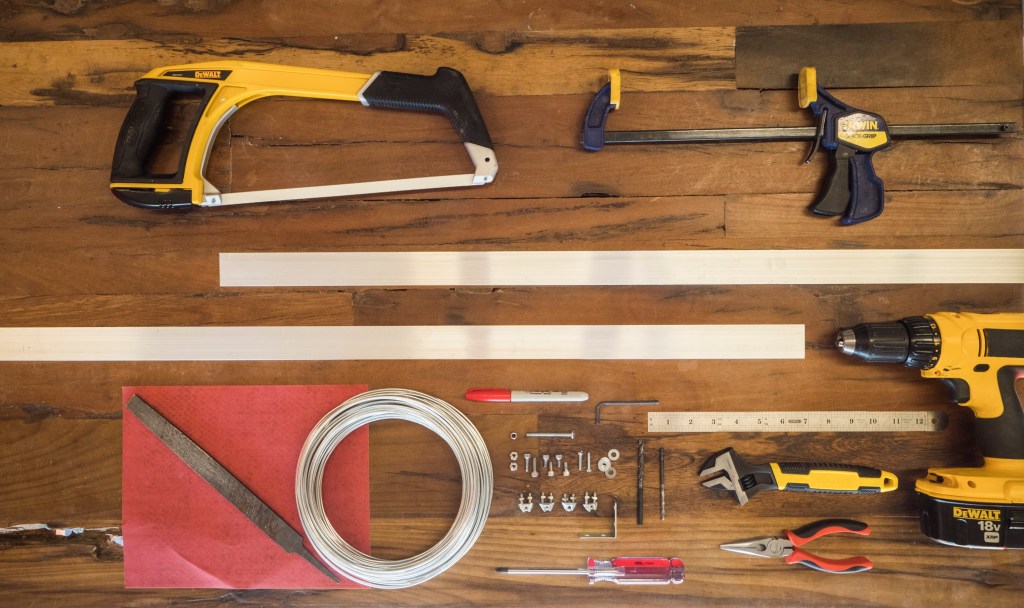
Materials:
- Two 48 x 1.5 in. aluminum flat bars, available at your local hardware store
- Six 5mm stainless steel Allen head bolts
- Flat washers (amount will depend on your bike frame; we used 12)
- 12-gauge galvanized utility wire, 10 ft.
- Four 1/16th-in. cable clamps
- One steel L angle bracket (size depends on your fork; ours was 2 x 2 in.)
- One 2-in. bolt (size depends on the depth of your fork)
Tools:
- Marker
- Hacksaw
- Clamp
- Flat file
- Drill with 5/32nd and 7/32nd drill bits
- Needle-nose pliers
- Allen wrench
- Screwdriver
- Crescent wrench
- Sandpaper (optional)
Part One: Prepare the Fenders
1. Shape the Fenders
Remove the rear wheel from your bike and then remove the tire. You’ll use the wheel as a guide to shape each fender to the correct curve. Wrap the aluminum bar around the rim.
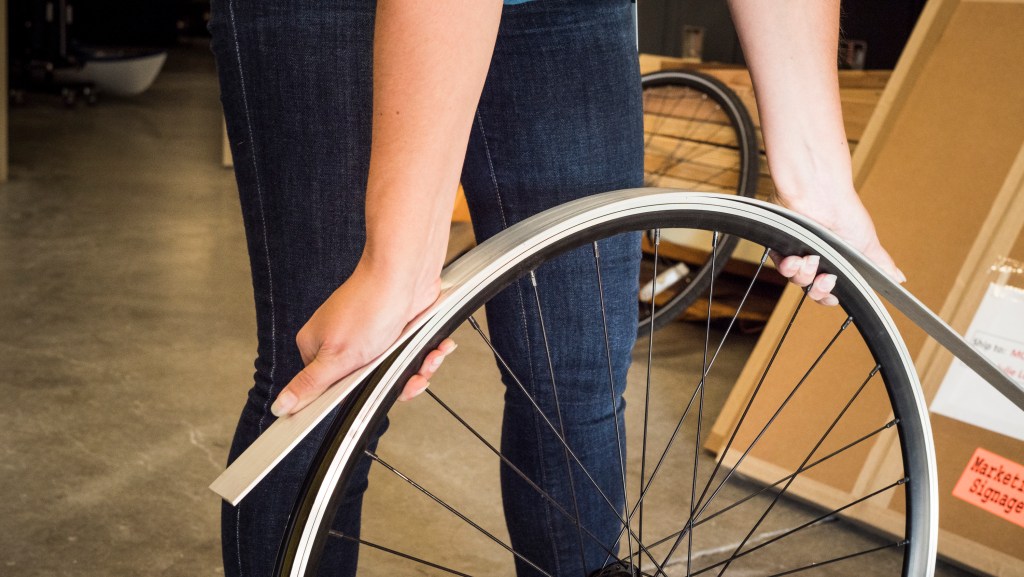
Once you have a general curve as a guide, run the metal back and forth over a hard-edged and stable surface, like a secured 2 x 4, to get the flat bar to hold the curve you want. Make sure you work out any spots that have an angle or an uneven curve. Repeat the process with the second fender. Put the tire back on your wheel.
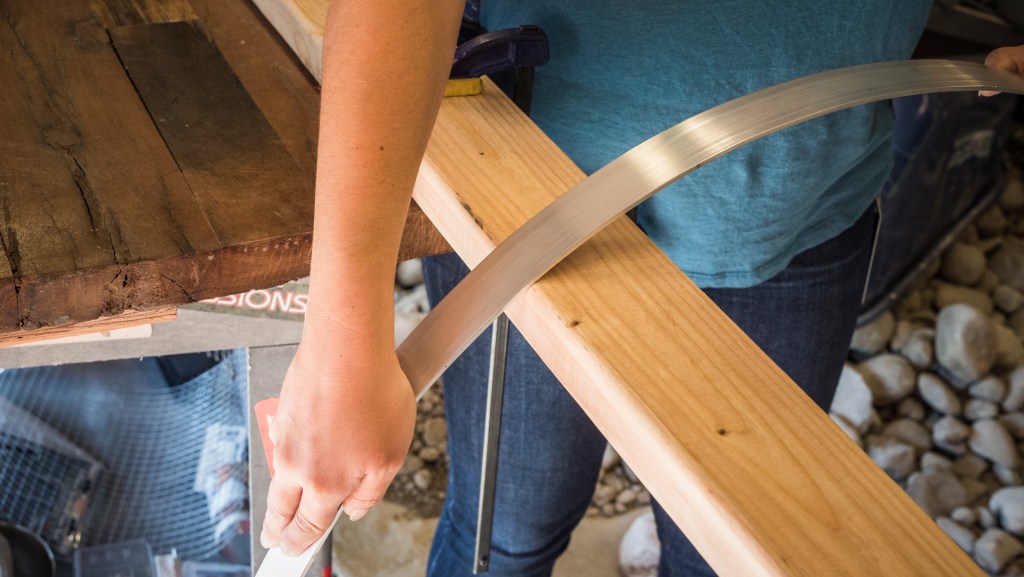
2. Measure the Fenders to Fit
The rear fender should cover about half the circumference of the wheel. The 48-in. aluminum flat bar was the perfect length for our 700c tires, and we didn’t need to remove any length for the correct fit.
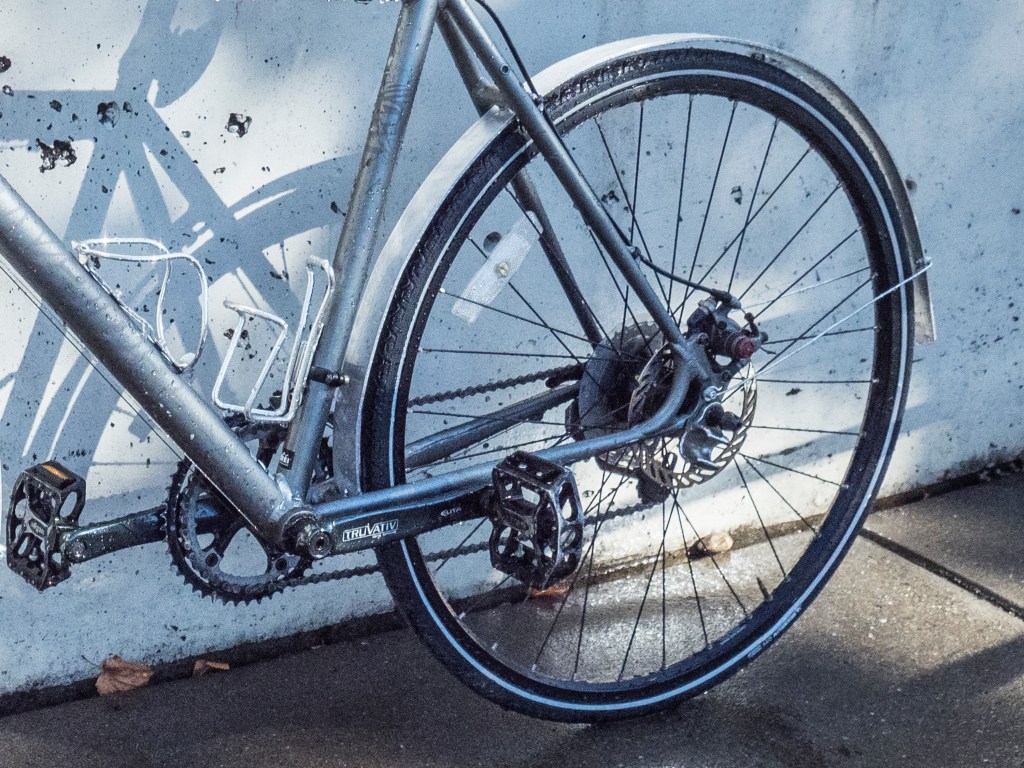
The front fender should cover about a quarter of the tire’s circumference. To measure, hold the fender about an inch above the tire with the bottom end at 3 o’clock. Mark the top of the fender at 12 o’clock. Clamp the aluminum securely to your work surface, then use a hacksaw to cut along the mark.

3. Shape the Ends of the Fenders
If you’d like to shape the ends of the fenders, you can use a large washer or other similar round object as a guide. Mark the desired curves and cut along the marks with a hacksaw. Then, use a flat file to smooth all the rough edges before moving on.
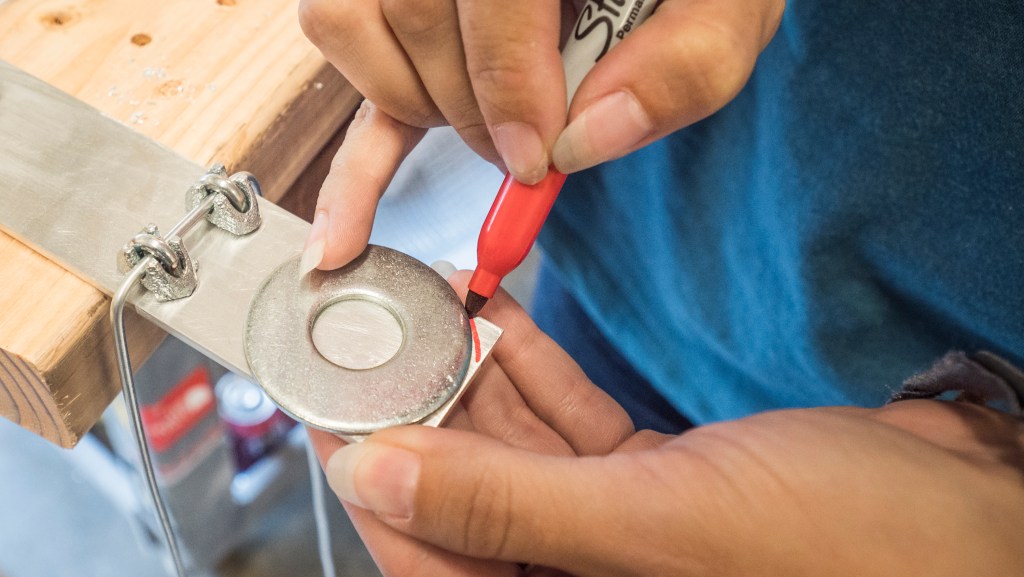
Part Two: Attach the Rear Fender
1. Drill Chainstay Mounting Hole
On your rear fender, mark a centered spot approximately 1 to 2 inches from the bottom of the fender. Note: Your rear wheel is still removed.
Drill a hole with the 7/32ndbit. You might want to slot this hole lengthwise (drill two holes touching each other to form an oval slot) to allow for some micro-adjustments.
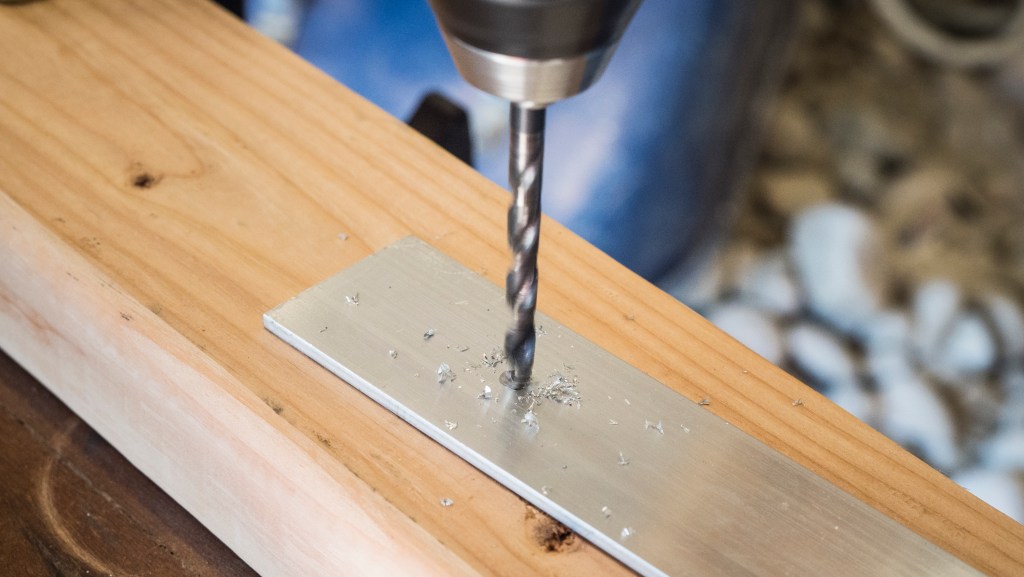
2. Mount the Fender to the Chainstay Bracket
Mount the rear fender to the chainstay bracket with a 5mm bolt and one or two washers (we didn’t put one on the non-frame side). The chainstay is the part of the frame closest to your chain.
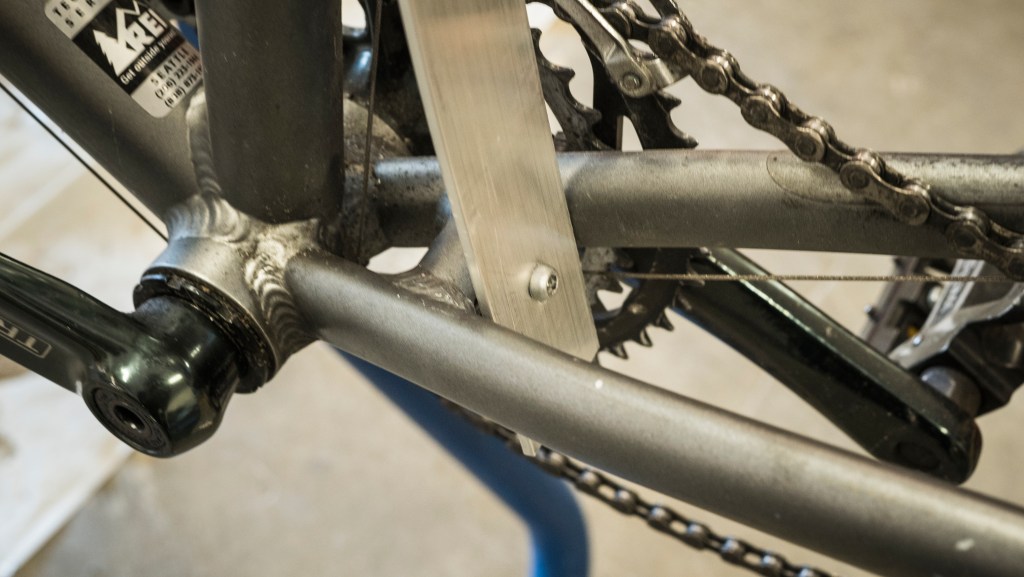
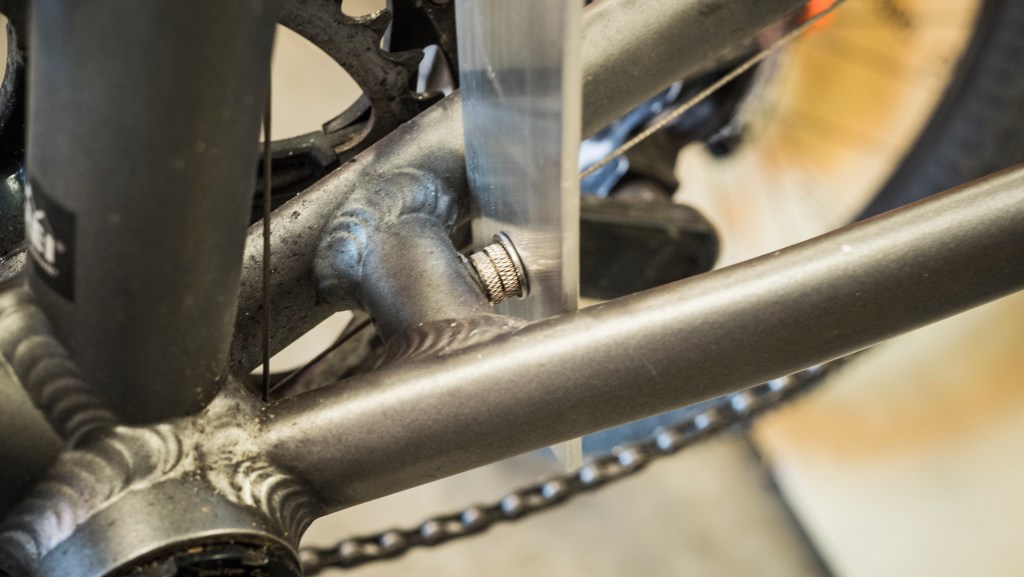
Note: Depending on your chainstay width, you may have to cut the fender narrower to fit, or you can add spacers between the frame and the fender to allow for more clearance (as pictured above).
3. Drill Seat Stay Mounting Hole
With your fender mounted at the chainstay, mark the location of the upper mounting hole under the center of the seat stay brace by making a line on either side of the brace.
Remove the fender from the frame and drill a hole with the 7/32nd bit centered between your marks. (Again, you might want to slot this hole lengthwise to allow for some micro-adjustments.)
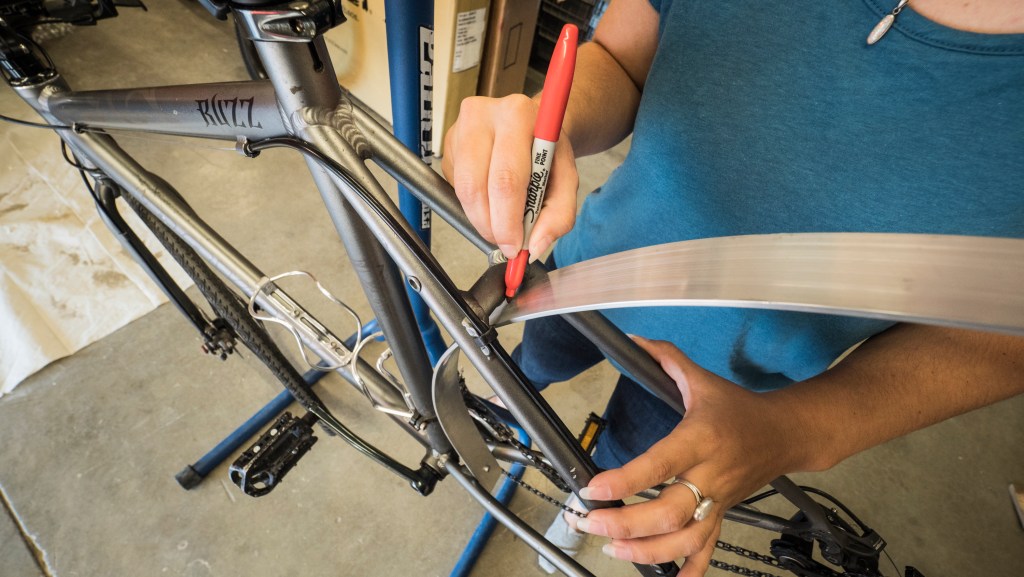
4. Mount the Fender to the Seat Stay Brace
Mount the rear fender at both the chainstay and seat stay with 5mm bolts and washers. Replace your wheel and make sure the fender is centered over it.
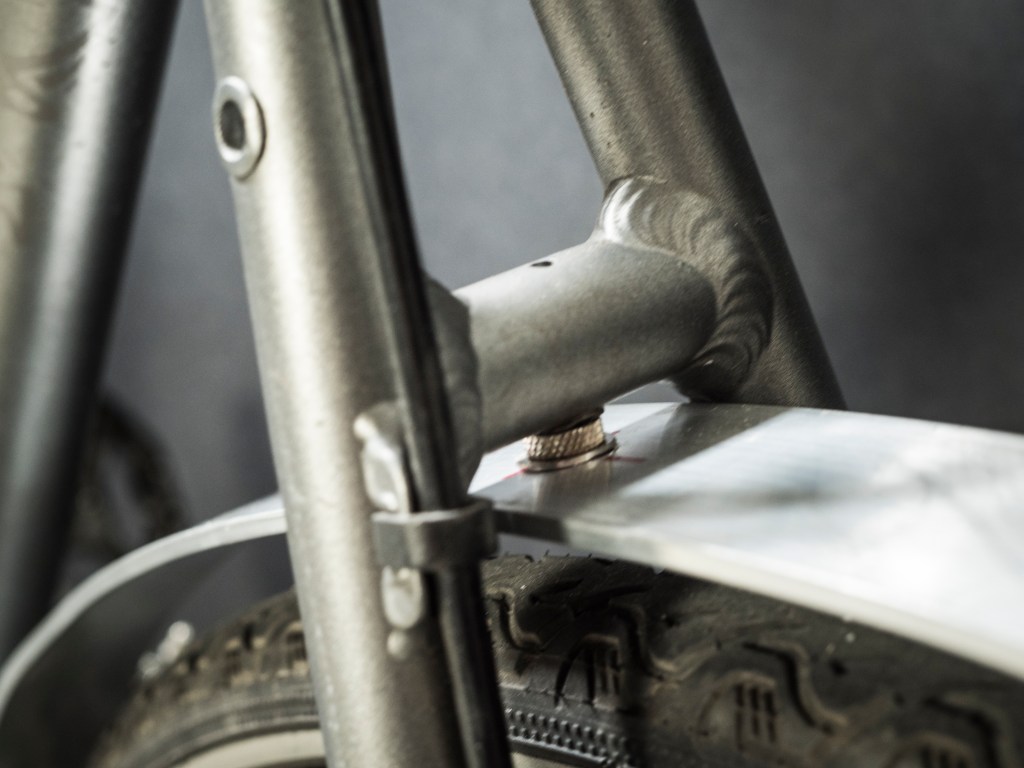
Part Three: Attach Wire Stays to the Rear Fender
1. Measure the Wire Stay
Measure out a length of utility wire that runs from the dropout on one side, back to the tail end of the fender and back around to the dropout on the other side. Then, add a few extra inches on each side. (The extra length will be used to wrap around the dropout bolts to secure the fender on each side).
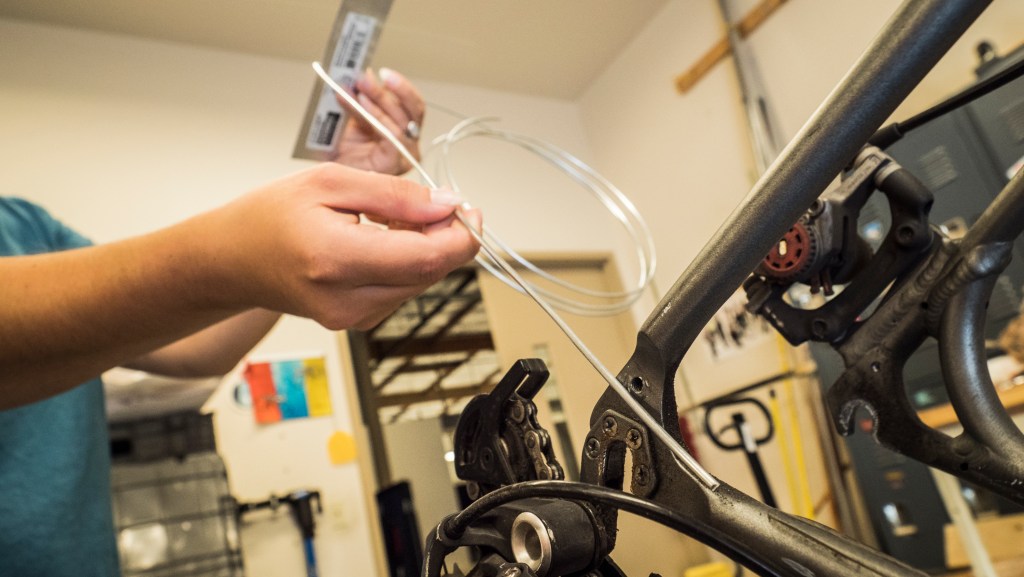
2. Shape and Position the Wire Stay
Bend the wire so it’s in the shape of a U around the fender.
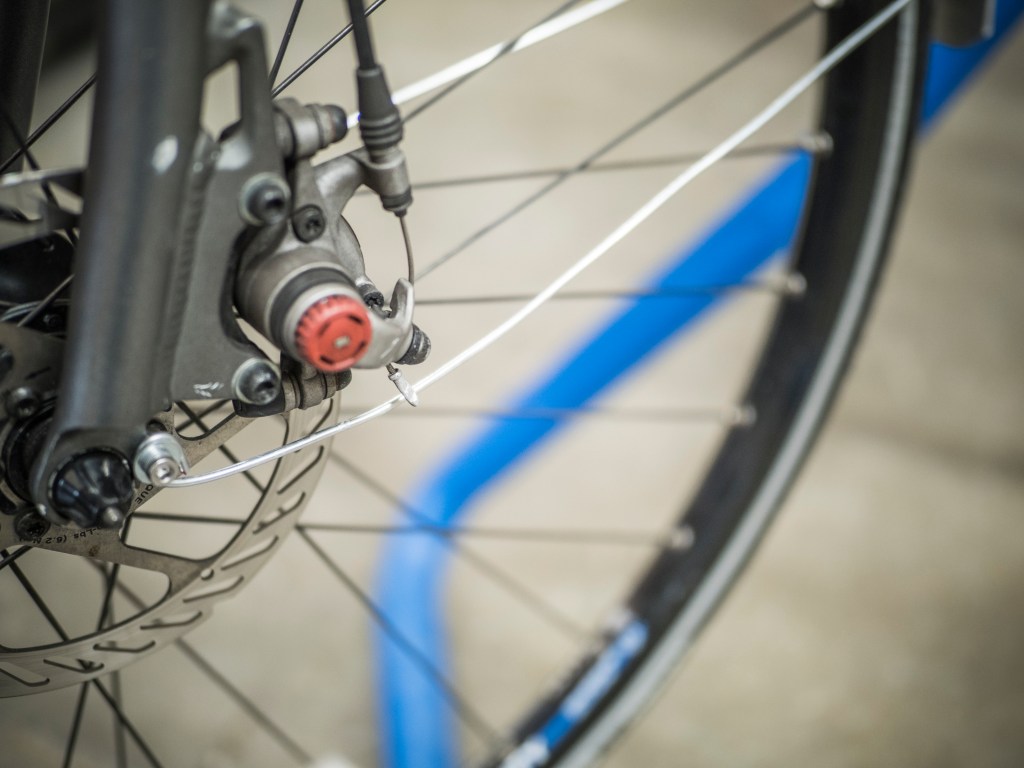
Position the wire so that the stay doesn’t touch any components when eventually secured to the dropout (as pictured). You may have to curve the wire a bit.
Mark a line on the fender where you want to position the wire stay.
You’re going to mount two sets of cable clamps; one on each edge of the fender. Use one of the cable clamp mounts to mark the positions of the drill holes on either side of the line you just drew.
3. Mount the Wire Stay with the Cable Clamps
Remove the fender and drill holes at the marks with the 5/32nd bit.
Mount the wire at the drilled holes using the cable clamps.
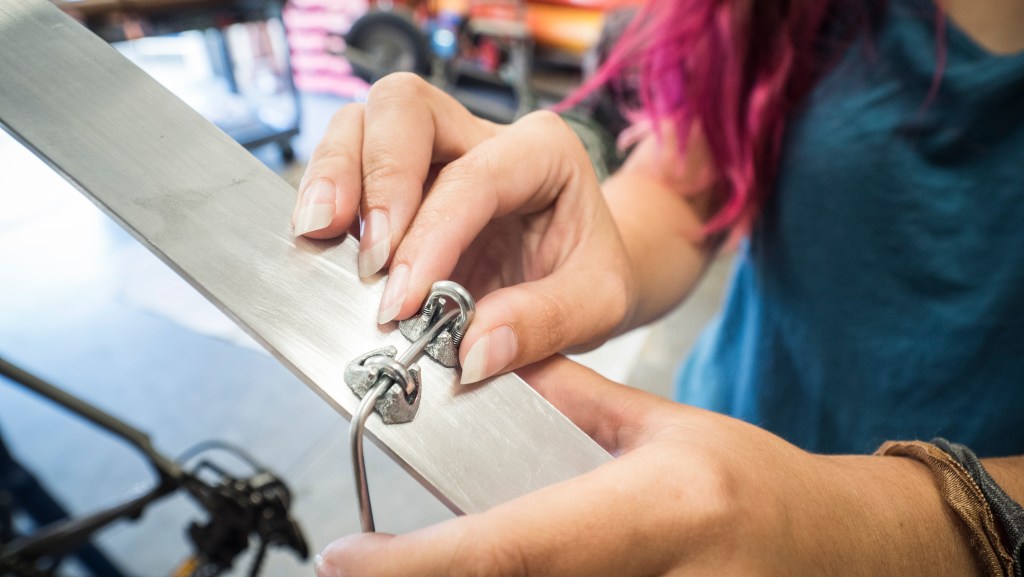
4. Attach the Wire Stay at the Dropouts
Hold the wire stay up to the dropout. It will be wrapped around a 5mm bolt through the dropout eyelet. Make three marks, each about 1 centimeter apart. These indicate where you will make each bend to wrap the wire around the bolt.
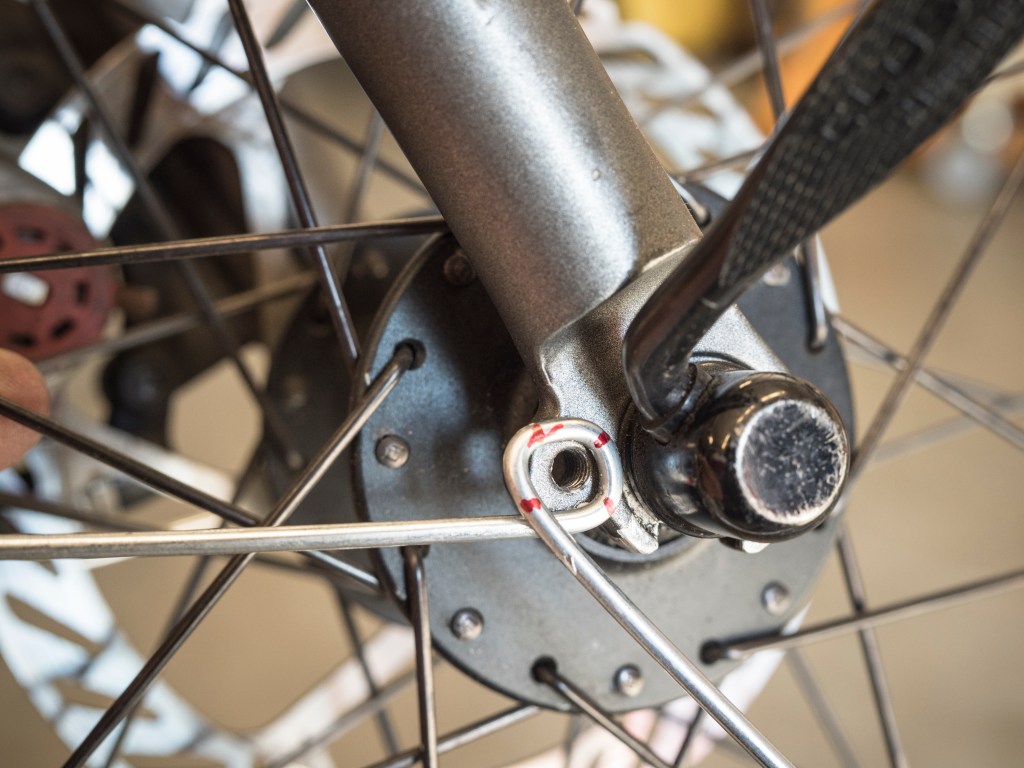
Make the bends with pliers so that the wire will wrap securely around the bolt. Clip the excess wire.
Using washers and 5mm bolts, mount the wire stay to the dropout eyelets on both sides.
Part Four: Attach the Front Fender
1. Drill Fork Crown Mounting Holes
Place the front of the L bracket 6 inches from the front end of the fender (as shown). Mark and drill two L bracket mounting holes with the 7/32nd bit.
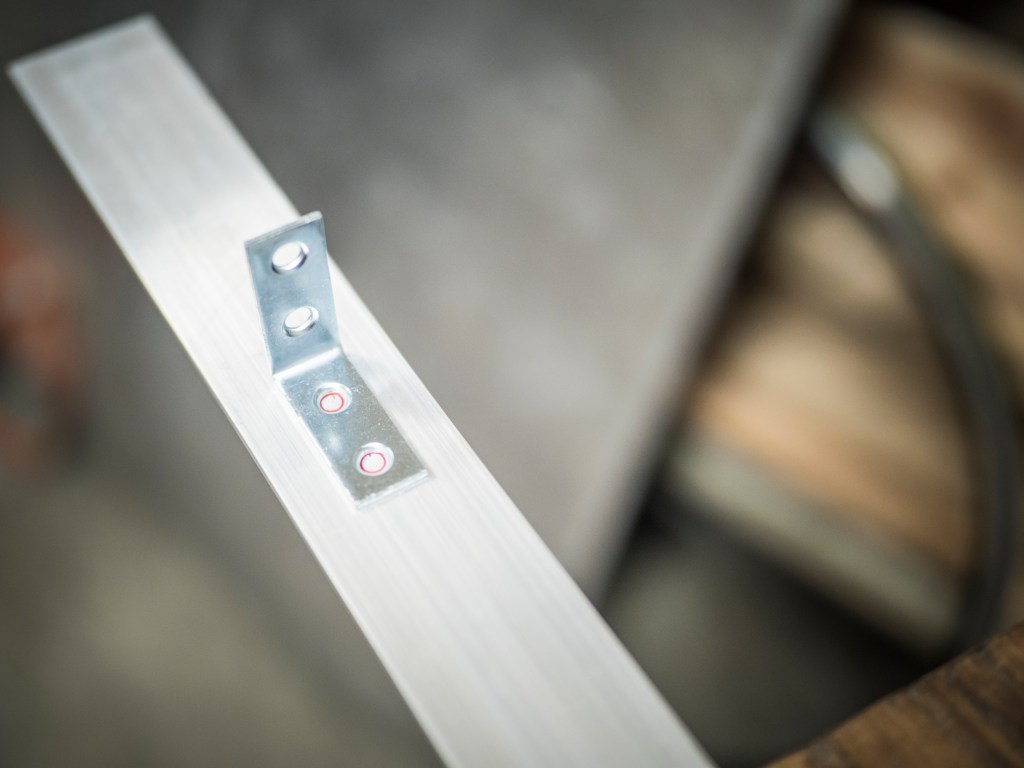
Mount the L bracket to the fender with two 5mm bolts and washers.
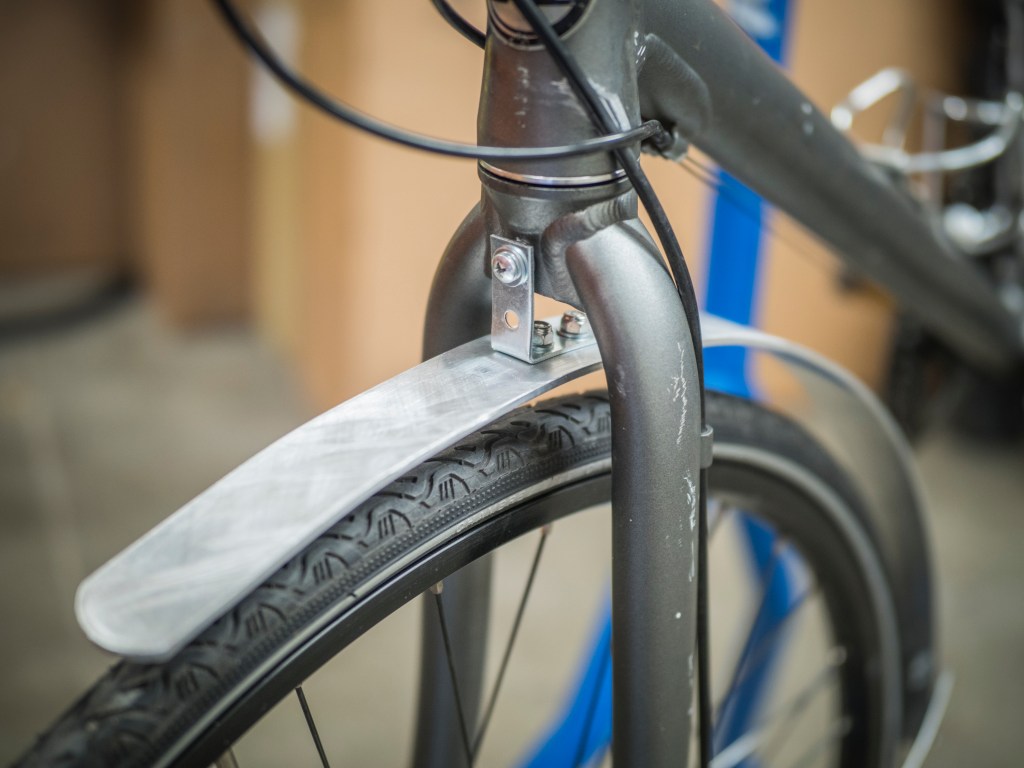
Mount the L bracket and fender to the fork crown with the 2″ bolt and washers. (Note: There may be a reflector or brakes already mounted here; in that case you can sandwich the L bracket behind them.)
2. Make Wire Stay for the Front Fender
Repeat the process of making and mounting a wire stay for your front fender. Measure the wire from one side of the fork end, back to about 3 o’clock (as pictured) on your fender, and around to the fork end on the other side. (Remember to add a few inches to accommodate for the wire wrapping around the eyelet bolt on each side.)
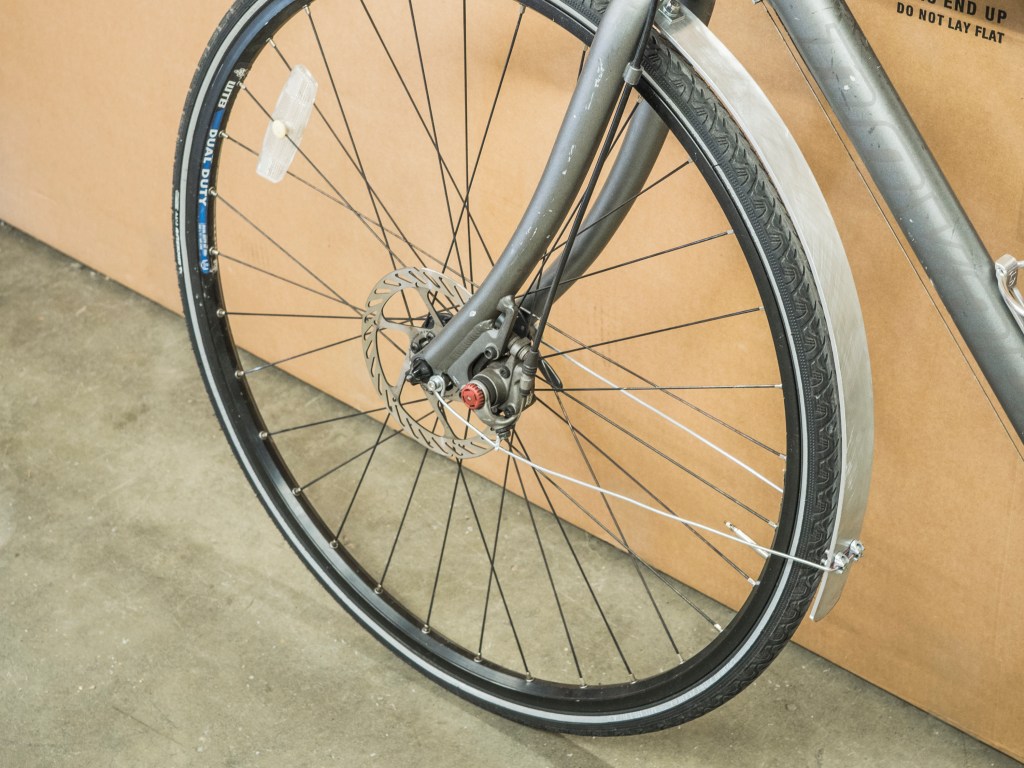
Part Five: Finish and Ride in the Rain
To give your new fenders a brushed look, you can go over the surface with some rough sandpaper (we used 120 grit). Then, pull on your rain gear, jump on your bike and enjoy your splatter-free ride.
